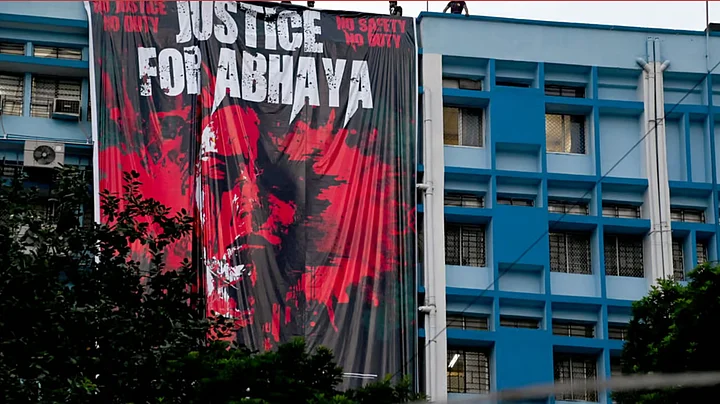The agitating junior doctors of state-run hospitals in West Bengal decided to partially call off their stir and resume “essential services” from Saturday morning, ending a 40-day-long cease-work following the ghastly rape and murder of a junior colleague at RG Kar Hospital on 9 August.
The announcement came late on Thursday night after a general body meeting of junior doctors. One of the reasons for calling off the stir was the inundation of hundreds of villages in the lower catchment areas of the Damodar River in West Bengal this week. The junior doctors proposed that they would be setting up “Abhaya” medical camps to serve the distressed in flooded villages.
The bigger factor that worked towards crisis mitigation was a substantial accommodation of their demands starting from the sacking of RG Kar Principal Sandip Ghosh (who is charged with financial irregularities and “destruction of crime scene evidence” by the CB)I, the removal of Vineet Goyal as Kolkata Police Commissioner, the removal of a deputy police commissioner, and even the arrest of a Kolkata Police inspector.
But Vineet Goyal’s transfer is not without controversy. The junior doctors who demanded Goyal’s ouster felt that instead of punitive actions, the chief minister actually offered him a prize post of ADG, Special Task Force.
There has been a merciless overhaul of the health administration, beginning with the removal of the top brass, ie, Director of Medical Education, Director of Health Services, removal of principals from at least half a dozen medical colleges in Kolkata and North Bengal, the dismantling of Patients Welfare Committees in hospitals (manned largely by ruling Trinamool Congress operatives), the overhaul of the West Bengal Medical Council, and punitive actions against a large number of post-graduate trainee doctors who, on behalf of the ruling establishment, had allegedly created “syndicates” to let loose a “threat culture” on medical college students.
To top it all, the state chief secretary on behalf of the government had to give a written assurance to complete a time-bound implementation of safety and security measures in medical colleges including a biometric entry system, increased CCTV surveillance, and additional security personnel to safeguard the junior doctors, paramedics, nurses, senior doctors, etc.
A fair deal no doubt but the junior doctors insist that it is only half the battle. The temporary end to the protracted battle was marked by a huge rally on Friday evening in which civil society showed massive solidarity with the aggrieved doctors.
A disenchanted civil society outraged by the horrific crime made the battle on the streets look like one for a regime change even though it did not have either the sanction of the ballot box. The movement was the culmination of accumulated public angst over corruption, malpractices, brazen political intimidation, a vitiated educational environment and a steady downward spiral of civic standards and moral moorings.
A determined and steadfast leadership of junior doctors often made the agitation look like one having the distinct traits of a “Gandhian satyagraha.” The junior doctors would begin a peaceful sit-in wherever they faced barriers and barricades in their marches. The overriding mood was one of peaceful negotiations and a resolution of their concerns and demands, whatever the provocations. The junior doctors consciously did not allow politics to infiltrate the movement.
Senior citizens in their ‘70s would turn up at the “dharna” manch with a bunch of homemade chapatis and subzi to feed the students. Others would simply bring a flask of tea and some packets of biscuits. The horrific tragedy at R G Kar gave birth to a spontaneous people’s movement in Bengal that was not merely restricted to junior doctors.
In contrast to the doctors, many saw a misplaced and misjudged priority in the utterances of Chief Minister Mamata Banerjee. While the public outrage centred around the gross mishandling of the case, the CM walked a different path, praising the cops for their crowd control efficiency. After the 14 August midnight rampage of the R G Kar hospital, even the Commissioner of Police acknowledged the failure in not being able to properly assess the situation but Mamata took a more positive line.
The image of the chief minister holding the centre stage of the sprawling empty conference hall in Nabanna and a delegation of 30-plus junior doctors waiting in a huddle outside for hours and finally deserting the talks will linger for a long time to come.
Such build-ups, holding all the promises of a breakthrough, broke down time and again and were indicative of a thick blanket of suspicion separating the two sides. The agitating doctors wanted talks on an open platform and not behind closed doors. This delayed a solution.
Mamata Banerjee continued to be in denial mode and fumed that what was being touted as spontaneous public angst was actually a “collaborative conspiracy” between the BJP and the communists to foment trouble.
Finally, she had to yield grounds to the junior doctors given the ensuing Durga Puja preparations and that she must do everything to restore the spirit of celebration.
Judging by the moods of many pujo organisers, downscaling the spirit of the carnival is very much on the cards given that a vast swathe of the people are yet to get over the shock of losing their “Durga”.
(The writer is a Kolkata-based senior journalist.)
(At The Quint, we question everything. Play an active role in shaping our journalism by becoming a member today.)
